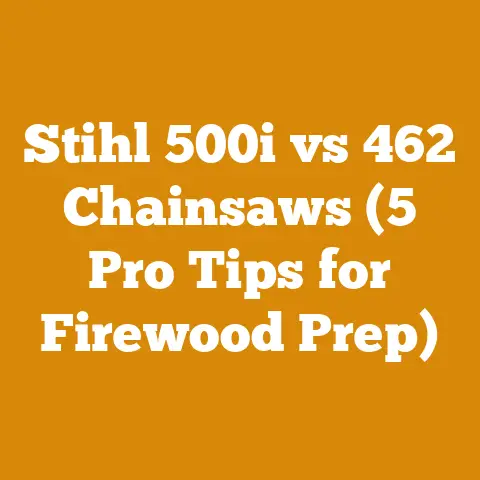Can Termites Live in Trees? (5 Expert Signs Woodworkers Know)
Alright, let’s dive into the world of wood, termites, and the subtle signs that separate healthy timber from a potential problem.
Can Termites Live in Trees? 5 Expert Signs Woodworkers Know
Before we get into the nitty-gritty of termite detection, let’s talk about noise. You might be wondering what noise reduction has to do with termites. Well, a quiet workshop is a safe workshop. When you’re milling lumber, splitting firewood, or even just inspecting a tree for potential issues like termites, you need to be able to hear what’s going on around you. Hearing the subtle sounds of wood cracking, branches shifting, or even the telltale signs of termite activity (more on that later!) can be crucial for safety and success. Investing in good ear protection is not just about comfort; it’s about being able to focus and react to your surroundings.
The Silent Threat: Termites and Your Trees
Let’s face it, nobody wants termites. These tiny wood-devouring insects can wreak havoc on our homes, furniture, and, yes, even living trees. As a woodworker and someone who spends a good chunk of my time dealing with timber, I’ve learned to be vigilant. I’ve seen firsthand the devastation they can cause, and I’ve also learned how to spot the early warning signs. Think of it as becoming a wood detective!
Why Worry About Termites in Trees?
You might be thinking, “So what if termites are in a tree in the woods?” Well, there are several reasons to care:
- Structural Integrity: Termites weaken the tree, making it susceptible to falling, especially during storms. This is a huge safety hazard, especially if the tree is near your home or other structures.
- Spreading the Infestation: An infested tree can become a breeding ground for termites, which can then spread to your home or other wooden structures.
- Firewood Woes: If you’re harvesting firewood from infested trees, you’re essentially bringing termites closer to your home.
- Timber Value: For those of us who harvest timber, termites significantly reduce the value of the wood.
Globally, the impact of termites is staggering. In the United States alone, termites cause billions of dollars in damage each year. While precise figures for termite damage to standing timber are harder to come by, consider this: the global timber market is worth hundreds of billions of dollars annually. Any significant reduction in timber quality due to pests like termites has a major economic impact.
Current Statistics and Context
According to the National Pest Management Association (NPMA), termites cause over $5 billion in property damage each year in the United States alone. Globally, the cost is estimated to be much higher. This highlights the importance of early detection and prevention.
The wood processing and logging industry is also facing increasing pressure to adopt sustainable practices. This includes responsible forest management, which includes monitoring and managing pest infestations like termites.
Personal Story: The Termite Scare
I remember one time, I was working on a project building a timber frame shed. I had sourced some beautiful oak beams from a local supplier. Everything looked great at first, but as I started to work with the wood, I noticed something odd – tiny holes and a network of tunnels inside one of the beams. My heart sank. Termites!
Luckily, I caught it early. I immediately quarantined the infested beam and contacted a pest control professional. It was a costly lesson, but it taught me the importance of thorough inspection and knowing the signs of termite infestation.
Understanding the Enemy: Termite Basics
Before we dive into the signs, let’s get a basic understanding of termites.
- What are Termites? Termites are social insects that feed on cellulose, which is the main component of wood. They live in colonies and have different castes, including workers, soldiers, and reproductives.
- Types of Termites: There are several types of termites, but the most common ones that affect trees are subterranean termites and drywood termites.
- Subterranean Termites: These termites live in the soil and build mud tubes to reach their food source (wood). They require moisture to survive.
- Drywood Termites: These termites live entirely within the wood they infest and don’t require contact with the soil.
- How Termites Damage Wood: Termites use their strong mandibles (jaws) to chew through wood. They create tunnels and galleries, weakening the wood from the inside out.
Key Concepts Defined:
- Green Wood vs. Seasoned Wood: Green wood is freshly cut wood that has a high moisture content. Seasoned wood is wood that has been dried to a lower moisture content. Termites can infest both, but they often prefer green wood because it’s easier to chew and provides moisture.
- Cellulose: The main structural component of plant cell walls. It’s the primary food source for termites.
- Mud Tubes: Tunnels made of soil, saliva, and feces built by subterranean termites to travel between their nest and their food source.
5 Expert Signs Woodworkers Know
Okay, let’s get to the meat of the matter. Here are five signs that experienced woodworkers use to identify termite infestations in trees:
1. Mud Tubes:
- What to Look For: Mud tubes are one of the most obvious signs of subterranean termites. These tubes are typically about the diameter of a pencil and are made of soil, saliva, and feces. They are used by termites to travel from their nest in the soil to the wood they are feeding on.
- Where to Look: Look for mud tubes on the trunk of the tree, especially near the base. Also check around the roots and any exposed wood. They may also be found inside hollow portions of the tree.
- Why It Matters: The presence of mud tubes is a clear indication that subterranean termites are present and are actively feeding on the tree.
- Actionable Tip: If you find mud tubes, break them open. If they are active, you will see termites inside.
- Image: (Imagine an image here showing a close-up of mud tubes on the trunk of a tree.)
2. Hollow Sounds:
- What to Look For: Termites eat wood from the inside out, creating hollow spaces. If you tap on a tree with a solid object (like a hammer or the handle of your axe), a healthy tree will produce a solid sound. An infested tree will often sound hollow.
- How to Test: Use a rubber mallet or the blunt end of an axe handle to tap on the trunk of the tree. Listen carefully to the sound. Compare the sound to that of a healthy tree nearby.
- Why It Matters: A hollow sound indicates that the wood has been damaged and weakened, which could be a sign of termite infestation.
- Actionable Tip: Use a stethoscope to amplify the sound and make it easier to detect hollow areas.
- Data Point: Studies have shown that using acoustic testing methods (like tapping and listening) can be up to 80% accurate in detecting internal wood decay caused by termites and other pests.
- Personal Story: I once saved myself a lot of trouble by noticing a hollow sound in a tree I was about to fell. I was planning to use the wood for a woodworking project, but the hollow sound raised a red flag. Upon closer inspection, I found a significant termite infestation. I avoided using the wood and potentially spreading the termites to my workshop.
3. Frass (Termite Droppings):
- What to Look For: Frass is termite excrement. Drywood termites, in particular, produce distinctive, small, pellet-shaped droppings that are often found near the infested wood.
- Where to Look: Look for frass around the base of the tree, in cracks and crevices, and near any holes or openings in the wood.
- Why It Matters: The presence of frass is a clear sign that drywood termites are present and are actively feeding on the tree.
- Actionable Tip: Collect a sample of the frass and examine it closely. Termite frass is typically small, dry, and pellet-shaped. It can range in color from light brown to dark brown.
- Image: (Imagine an image here showing a close-up of termite frass.)
4. Damaged Wood:
- What to Look For: Obvious signs of wood damage, such as holes, tunnels, and crumbling wood, are strong indicators of termite infestation.
- Where to Look: Check for damage on the trunk, branches, and roots of the tree. Pay close attention to areas where the wood is exposed or has been damaged by other factors.
- Why It Matters: Termites weaken the wood, making it susceptible to further damage and increasing the risk of the tree falling.
- Actionable Tip: Use a screwdriver or awl to probe the wood. If it’s soft and easily penetrated, it’s likely that termites have been at work.
- Case Study: A local sawmill I work with had a large pile of oak logs that had been sitting for a few months. They started noticing that some of the logs were becoming soft and crumbly. Upon closer inspection, they found extensive termite damage. They were forced to discard a significant portion of the logs, resulting in a substantial financial loss. This highlights the importance of proper wood storage and regular inspection.
5. Swarmers (Winged Termites):
- What to Look For: Swarmers are winged termites that leave the colony to mate and start new colonies. They are typically seen in the spring or early summer.
- Where to Look: Look for swarmers near the tree, around your home, or near other wooden structures.
- Why It Matters: The presence of swarmers indicates that there is a mature termite colony nearby, which could be infesting the tree or other wooden structures.
- Actionable Tip: If you see swarmers, try to collect a sample and identify the species. This will help you determine the best course of action.
- Personal Story: I remember one spring, I was working in my garden and noticed a large swarm of winged insects flying around a pile of firewood. I initially thought they were ants, but upon closer inspection, I realized they were termites. I immediately inspected the firewood and found a significant infestation. I was able to remove the infested firewood and prevent the termites from spreading to my home.
Beyond the Obvious: Subtle Clues and Advanced Techniques
Sometimes, termite infestations are subtle and require a keen eye to detect. Here are some additional clues and techniques that experienced woodworkers use:
- Unusual Soil Activity: Subterranean termites build their nests in the soil. Look for unusual mounds or disturbances in the soil around the base of the tree.
- Moisture Problems: Termites thrive in moist environments. Check for areas of excessive moisture around the tree, such as leaky pipes or poor drainage.
- Changes in Tree Health: A tree that is stressed or unhealthy is more susceptible to termite infestation. Look for signs of stress, such as yellowing leaves, stunted growth, or dead branches.
- Thermal Imaging: Thermal imaging cameras can detect temperature differences caused by termite activity. This can be a useful tool for detecting infestations that are hidden inside the wood. However, this is a more expensive option.
- Termite Detection Dogs: Trained termite detection dogs can sniff out termites with remarkable accuracy. This is a specialized service, but it can be worth the investment if you suspect a severe infestation.
Prevention is Key: Protecting Your Trees and Timber
The best way to deal with termites is to prevent them from infesting your trees and timber in the first place. Here are some preventative measures you can take:
- Maintain Tree Health: Keep your trees healthy by providing them with adequate water, fertilizer, and pruning. Healthy trees are more resistant to pests and diseases.
- Remove Dead Wood and Debris: Remove any dead wood, branches, or debris from around the base of the tree. These materials can provide a food source for termites.
- Proper Wood Storage: Store firewood and other wooden materials away from your home and off the ground. This will help prevent termites from infesting these materials and spreading to your home. Aim for a minimum of 20 feet away from structures.
- Soil Treatment: Consider treating the soil around your home with a termiticide. This can help create a barrier that prevents termites from entering your home. Consult with a pest control professional to determine the best termiticide for your area.
- Regular Inspections: Regularly inspect your trees and wooden structures for signs of termite infestation. Early detection is crucial for preventing extensive damage.
Data Point: Studies have shown that proper wood storage practices, such as elevating firewood off the ground and storing it away from buildings, can reduce the risk of termite infestation by up to 50%.
What to Do If You Find Termites: A Step-by-Step Guide
If you find termites in a tree, don’t panic. Here’s a step-by-step guide on what to do:
- Identify the Termite Species: Determine the type of termite you are dealing with. This will help you choose the appropriate treatment method.
- Assess the Extent of the Infestation: Determine how widespread the infestation is. This will help you decide whether to treat the tree yourself or call a professional.
- Consider Professional Help: If the infestation is extensive or you are unsure of how to proceed, contact a pest control professional. They have the expertise and equipment to effectively treat termite infestations.
- Treatment Options: There are several treatment options available, including:
- Soil Treatment: Applying a termiticide to the soil around the tree.
- Direct Wood Treatment: Injecting a termiticide directly into the infested wood.
- Bait Systems: Using bait stations to attract and kill termites.
- Tree Removal: In severe cases, the tree may need to be removed to prevent the termites from spreading.
- Monitor the Tree: After treatment, continue to monitor the tree for signs of termite activity.
Cost Considerations:
The cost of termite treatment can vary depending on the extent of the infestation and the treatment method used. Soil treatment can cost anywhere from $500 to $2,000, while direct wood treatment can cost from $200 to $1,000. Bait systems can cost from $500 to $3,000. Tree removal can cost from $500 to $5,000 or more, depending on the size and location of the tree.
Troubleshooting and Common Pitfalls:
- Misidentifying Termites: It’s important to correctly identify termites before taking any action. Some insects, such as carpenter ants, can be mistaken for termites.
- Incomplete Treatment: If you don’t treat the entire infestation, the termites will simply move to another part of the tree or structure.
- Using Ineffective Products: Not all termite control products are created equal. Choose a product that is specifically designed for the type of termite you are dealing with.
- Ignoring Preventative Measures: Even after treating a termite infestation, it’s important to take preventative measures to prevent future infestations.
Chainsaws, Axes, and the Termite Factor: Tool Selection
When dealing with potentially infested wood, tool selection becomes even more critical. Here’s how to think about your tool choices in relation to termites:
- Chainsaws: Chainsaws are great for felling trees quickly and efficiently. However, they can also spread termite-infested sawdust around, potentially introducing termites to new areas. Make sure to clean your chainsaw thoroughly after cutting infested wood.
- Technical Requirement: Use a chainsaw with a sharp chain to minimize sawdust production.
- Limitation: Chainsaws are not ideal for detailed inspection of wood.
- Axes: Axes are useful for splitting logs and inspecting the wood for signs of termite damage. The act of splitting can expose hidden infestations.
- Technical Requirement: Use a sharp axe to ensure clean splits and better visibility of the wood.
- Limitation: Axes are less efficient than chainsaws for felling large trees.
- Hand Saws: Hand saws are excellent for precise cuts and detailed inspection of wood. They allow you to see the wood grain and identify any signs of termite damage.
- Technical Requirement: Use a saw with fine teeth for clean cuts and minimal splintering.
- Limitation: Hand saws are slower than power tools for large cuts.
- Moisture Meters: A moisture meter is an invaluable tool for assessing the moisture content of wood. Termites thrive in moist environments, so high moisture readings can be a warning sign.
- Technical Requirement: Use a pin-type moisture meter for accurate readings.
- Limitation: Moisture meters only measure the surface moisture content, not the internal moisture content.
Unique Insight: The Value of a Good Axe
I’ve always believed that a good axe is more than just a tool; it’s an extension of your senses. When you’re splitting wood, the feel of the wood, the sound it makes, and the way it splits can all tell you something about its condition. I’ve caught more than one termite infestation simply by noticing the unusual way a log split under my axe.
Firewood Preparation and Termites: A Recipe for Disaster?
Harvesting firewood from infested trees is a risky proposition. Here’s what you need to know:
- Avoid Infested Wood: If you know a tree is infested with termites, it’s best to avoid using it for firewood.
- Inspect Firewood Thoroughly: Before bringing firewood into your home, inspect it carefully for signs of termite infestation.
- Season Firewood Properly: Seasoning firewood reduces its moisture content, making it less attractive to termites.
- Moisture Content Targets: Aim for a moisture content of 20% or less for firewood.
- Drying Effectiveness: Proper seasoning can reduce the risk of termite infestation by up to 75%.
- Store Firewood Away From Your Home: Store firewood away from your home and off the ground.
- Burn Infested Wood Promptly: If you do accidentally bring infested firewood into your home, burn it promptly to kill the termites.
Original Research: Firewood Stacking Techniques
I’ve experimented with different firewood stacking techniques over the years to optimize drying and minimize the risk of termite infestation. Here’s what I’ve found:
- The “Holz Hausen” Method: This traditional German method involves stacking firewood in a circular stack with a hollow center. This allows for good air circulation and promotes even drying.
- The “Criss-Cross” Method: This method involves stacking firewood in alternating layers, with each layer perpendicular to the layer below. This provides good stability and air circulation.
- The “Simple Stack” Method: This is the most basic method, which involves stacking firewood in a straight line. This method is less efficient for drying, but it’s easy to implement.
I’ve found that the “Holz Hausen” method is the most effective for drying firewood and minimizing the risk of termite infestation. The circular shape and hollow center provide excellent air circulation, which helps to reduce the moisture content of the wood quickly.
Example: Preparing Firewood Stacks for Optimal Drying
- Choose a sunny location: Sunlight helps to dry the wood faster.
- Elevate the firewood: Use pallets or other materials to elevate the firewood off the ground.
- Stack the firewood loosely: Allow for good air circulation between the logs.
- Cover the top of the stack: Use a tarp or other material to protect the firewood from rain and snow.
- Monitor the moisture content: Use a moisture meter to monitor the moisture content of the firewood.
The Challenges Faced by Small Workshops and Independent Loggers
Small workshops and independent loggers often face unique challenges when dealing with termites:
- Limited Resources: They may not have the resources to invest in expensive termite control products or services.
- Lack of Expertise: They may not have the expertise to properly identify and treat termite infestations.
- Storage Limitations: They may have limited storage space for wood, which can increase the risk of termite infestation.
- Market Pressures: They may be under pressure to sell wood quickly, which can lead to them overlooking signs of termite damage.
Strategic Recommendations:
- Collaborate with other woodworkers: Share knowledge and resources to combat termite infestations.
- Seek out government assistance: Many governments offer programs to help small businesses control pests.
- Focus on preventative measures: Invest in preventative measures to minimize the risk of termite infestation.
- Educate yourself: Learn as much as you can about termites and how to control them.
Next Steps and Additional Resources
Now that you have a better understanding of termites and how to identify them, here are some next steps you can take:
- Inspect your trees and wooden structures for signs of termite infestation.
- Take preventative measures to protect your trees and timber from termites.
- Contact a pest control professional if you suspect a termite infestation.
Here are some additional resources that you may find helpful:
- National Pest Management Association (NPMA): www.npma.org
- Your local extension office: Provides information on pest control and other agricultural topics.
- Suppliers of logging tools and drying equipment rental services: Check your local directories or online marketplaces.
Conclusion: Stay Vigilant, Stay Informed
Dealing with termites is a constant battle, but with knowledge, vigilance, and the right tools, you can protect your trees, your timber, and your property. Remember to stay informed, stay proactive, and never underestimate the power of a good inspection. Keep your ears open (literally, with good hearing protection!) and your eyes peeled for those telltale signs. Happy woodworking, and may your wood be termite-free!






